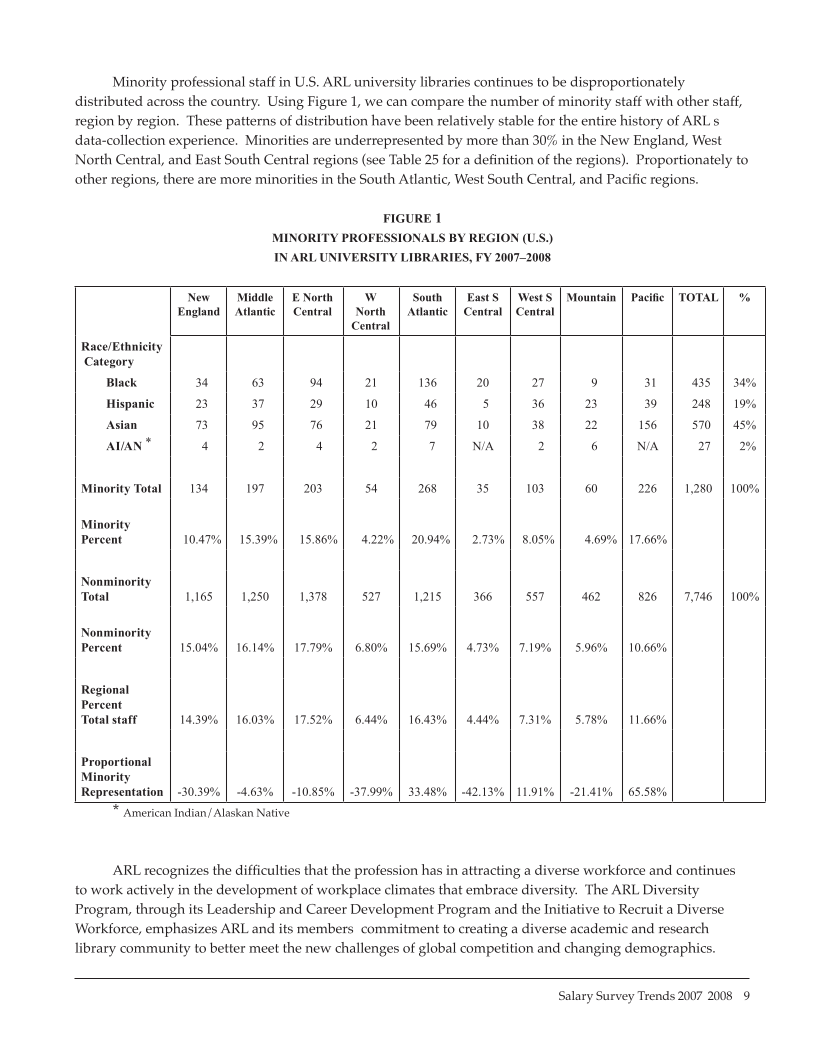Salary Survey Trends 2007–2008 · 9 Minority professional staff in U.S. ARL university libraries continues to be disproportionately distributed across the country. Using Figure 1, we can compare the number of minority staff with other staff, region by region. These patterns of distribution have been relatively stable for the entire history of ARL’s data-collection experience. Minorities are underrepresented by more than 30% in the New England, West North Central, and East South Central regions (see Table 25 for a definition of the regions). Proportionately to other regions, there are more minorities in the South Atlantic, West South Central, and Pacific regions. Figure 1 MINORITY PROFESSIONALS BY REGION (U.S.) IN ARL UNIVERSITY LIBRARIES, FY 2007–2008 New England Middle Atlantic E North Central W North Central South Atlantic East S Central West S Central Mountain Pacific TOTAL % Race/Ethnicity Category Black 34 63 94 21 136 20 27 9 31 435 34% Hispanic 23 37 29 10 46 5 36 23 39 248 19% Asian 73 95 76 21 79 10 38 22 156 570 45% AI/AN * 4 2 4 2 7 N/A 2 6 N/A 27 2% Minority Total 134 197 203 54 268 35 103 60 226 1,280 100% Minority Percent 10.47% 15.39% 15.86% 4.22% 20.94% 2.73% 8.05% 4.69% 17.66% Nonminority Total 1,165 1,250 1,378 527 1,215 366 557 462 826 7,746 100% Nonminority Percent 15.04% 16.14% 17.79% 6.80% 15.69% 4.73% 7.19% 5.96% 10.66% Regional Percent Total staff 14.39% 16.03% 17.52% 6.44% 16.43% 4.44% 7.31% 5.78% 11.66% Proportional Minority Representation -30.39% -4.63% -10.85% -37.99% 33.48% -42.13% 11.91% -21.41% 65.58% * American Indian/Alaskan Native ARL recognizes the difficulties that the profession has in attracting a diverse workforce and continues to work actively in the development of workplace climates that embrace diversity. The ARL Diversity Program, through its Leadership and Career Development Program and the Initiative to Recruit a Diverse Workforce, emphasizes ARL and its members’ commitment to creating a diverse academic and research library community to better meet the new challenges of global competition and changing demographics.




















































































































